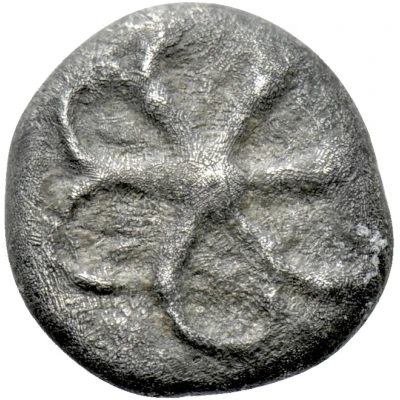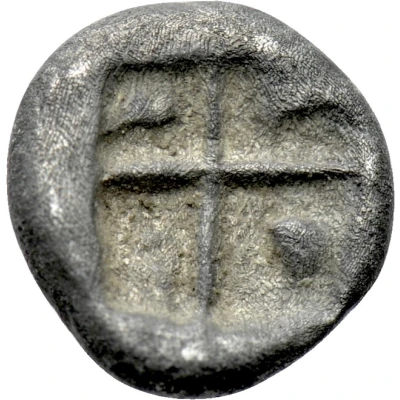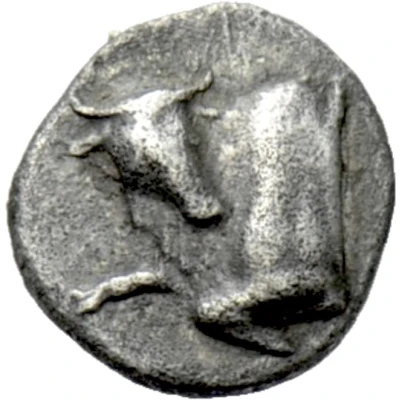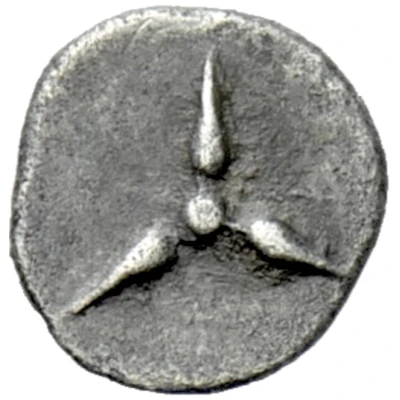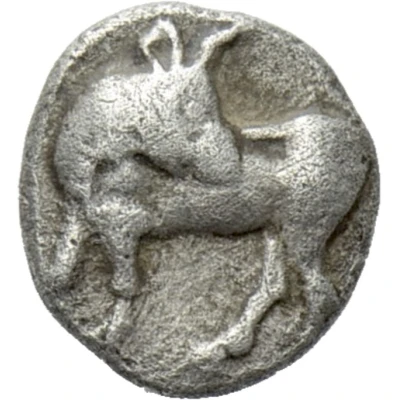
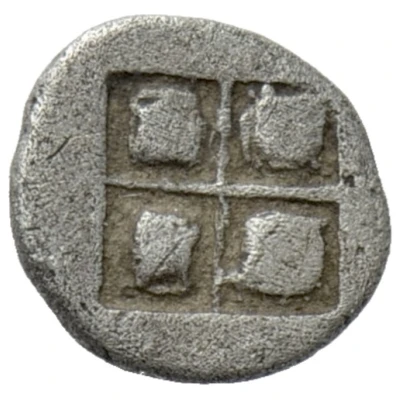

© Numismatik Naumann GmbH
Hemiobol 500 BC - 400 BC
| Silver | 0.38 g | 8.0 mm |
| Issuer | Uncertain Greek city (Greece (ancient)) |
|---|---|
| Type | Standard circulation coin |
| Years | 500 BC - 400 BC |
| Value | Hemiobol (1⁄12) |
| Composition | Silver |
| Weight | 0.38 g |
| Diameter | 8.0 mm |
| Shape | Round (irregular) |
| Technique | Hammered, Incuse |
| Demonetized | Yes |
| Updated | 2024-10-10 |
| Numista | N#173835 |
|---|---|
| Rarity index | 100% |
Reverse
Quadripartite incuse square
Interesting fact
The Hemiobol coin was used in ancient Greece during the 5th century BC and was equivalent to half an obol, which was the standard unit of currency at the time. The coin was made of silver and weighed approximately 0.38 grams. Despite its small size, the Hemiobol was an important coin in ancient Greece, as it was used to buy small items such as food, drinks, and other everyday goods. It was also used as a form of payment for workers and soldiers. The Hemiobol coin was minted in many different cities across ancient Greece, and its design often featured an image of a mythical creature, such as a griffin or a sphinx, on one side and an inscription on the other. Today, the Hemiobol coin is highly sought after by collectors and historians, providing a unique glimpse into the economic and cultural practices of ancient Greece.
